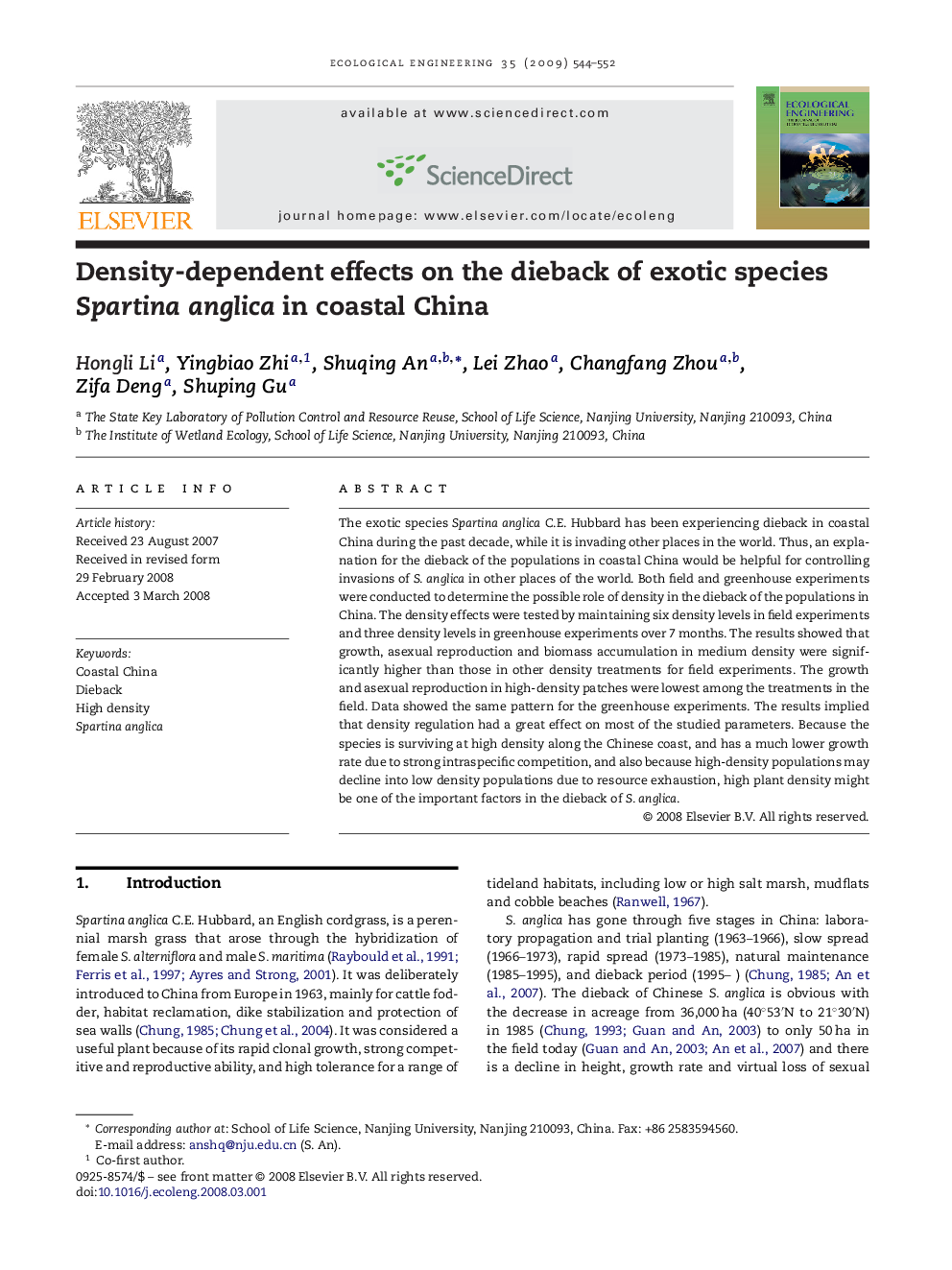| Article ID | Journal | Published Year | Pages | File Type |
|---|---|---|---|---|
| 4390986 | Ecological Engineering | 2009 | 9 Pages |
The exotic species Spartina anglica C.E. Hubbard has been experiencing dieback in coastal China during the past decade, while it is invading other places in the world. Thus, an explanation for the dieback of the populations in coastal China would be helpful for controlling invasions of S. anglica in other places of the world. Both field and greenhouse experiments were conducted to determine the possible role of density in the dieback of the populations in China. The density effects were tested by maintaining six density levels in field experiments and three density levels in greenhouse experiments over 7 months. The results showed that growth, asexual reproduction and biomass accumulation in medium density were significantly higher than those in other density treatments for field experiments. The growth and asexual reproduction in high-density patches were lowest among the treatments in the field. Data showed the same pattern for the greenhouse experiments. The results implied that density regulation had a great effect on most of the studied parameters. Because the species is surviving at high density along the Chinese coast, and has a much lower growth rate due to strong intraspecific competition, and also because high-density populations may decline into low density populations due to resource exhaustion, high plant density might be one of the important factors in the dieback of S. anglica.
